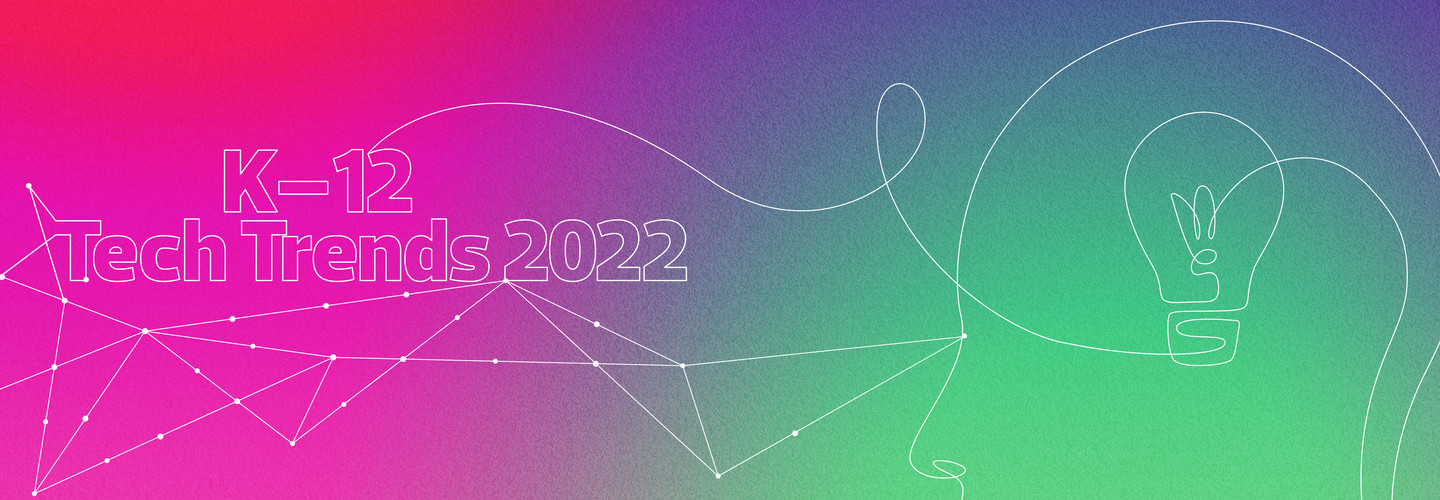While some IT administrators worry about the safety of moving their data to the cloud, working with a third party on security services can bring confidence to the use of this solution, Miller says.
“We used to store all of our data in-house in file cabinets, and it was easy enough for someone to take a file and walk out and have that data,” Miller says. “Tech directors are realizing that it might not necessitate someone in-house managing that if they can ensure that the companies they’ve partnered with are adhering to the strictest guidelines.”
3. Cybersecurity Helps Schools Defend Against Growing Threats
Cybersecurity is such a hot topic in K–12 education that it’s garnered federal attention. The K–12 Cybersecurity Act is the first cybersecurity-focused law for K–12 institutions, signed by President Joe Biden in October. Its signing initiated a federal review of cyberthreats against districts, threats that have increased greatly since the shift to remote learning in 2020.
Some of the most popular cybersecurity tools to surface in response to these cyberattacks are next-generation protections powered by AI and ML. These include endpoint security solutions and next-generation firewalls. Security orchestration, automation and response tools specifically use automation to detect and remediate possible cybersecurity breaches. The automated component in SOAR helps make cybersecurity more manageable for understaffed IT teams in K–12 environments.
School districts are also being urged to incorporate multifactor authentication. Compared with other organizations, K–12 districts have been slower to implement this solution, says Doug Levin, national director for K12 SIX. Levin cites leadership hesitation as one of the primary hurdles IT administrators face in implementing MFA, which he notes is strongly recommended by his organization and the FBI.
MORE ON EDTECH: Protect your district from bad password hygiene.
“Ultimately, it is the single best protection against the vast majority of phishing and social engineering attacks against school districts,” he says. “School districts are particularly vulnerable to password reuse and password sharing. And, as a result, having another layer of defense there is really critical for them.”
4. Asynchronous Learning Gives Students More Freedom
With the shift to remote learning came the inclination for students to complete lessons and turn in projects on their own time. Asynchronous learning, particularly for older students, allows for more freedom and flexibility in the school day.
Although many students are back in the classroom and remote learning isn’t a necessity for most, some schools still offer asynchronous learning models. Being able to complete schoolwork on their own time, without being held to a 7 a.m. – 3 p.m. schedule, allows students to get jobs, participate in internships and even help their families by taking care of younger siblings.
EXPLORE: Asynchronous learning gains popularity following the pandemic.
While most popular with high school students, younger students can benefit from this learning model as well. “Management of your own learning is something that students of all age ages really need to learn, and they learn it pretty quickly,” says Mickey Revenaugh, vice president for business development and global online learning at Pearson Online Academy.
The additional freedom and self-sufficiency that comes with asynchronous learning doesn’t render educators obsolete. Rather, teachers can guide students through material when they struggle and help each learner achieve a higher level of understanding regarding the content.
5. Esports Programs Gain a Foothold in K–12
Esports programs are growing in K–12 districts as the competitions expand globally. The esports ecosystem is projected to reach $1.8 billion in revenue by 2022. Schools are helping students prepare for this lucrative field by starting their own esports programs at the K–12 level.
Similar to traditional sports, esports teams compete in tournaments and championships for prizes and prestige. There are scholarships for esports athletes at colleges and universities, and especially talented players can join a professional team.
Esports isn’t only about playing video games, however. Other students can support the team as content creators, organizers, strategists and entrepreneurs.
LEARN MORE: Level up your program with tech that supports the team behind the team.
Not everyone on an esports team aspires to make a career of playing. Teams are growing in school districts not just for the career possibilities, but because esports fosters a safe and diverse community of students who might not otherwise join a club or program at their school. The teams promote student engagement and can lead to educational and personal success.
Which of these trends is your district planning to explore in 2022? Follow EdTech on Twitter at @EdTech_K12 using the hashtag #K12TechTrends22 to learn more about popular educational technology all year.











